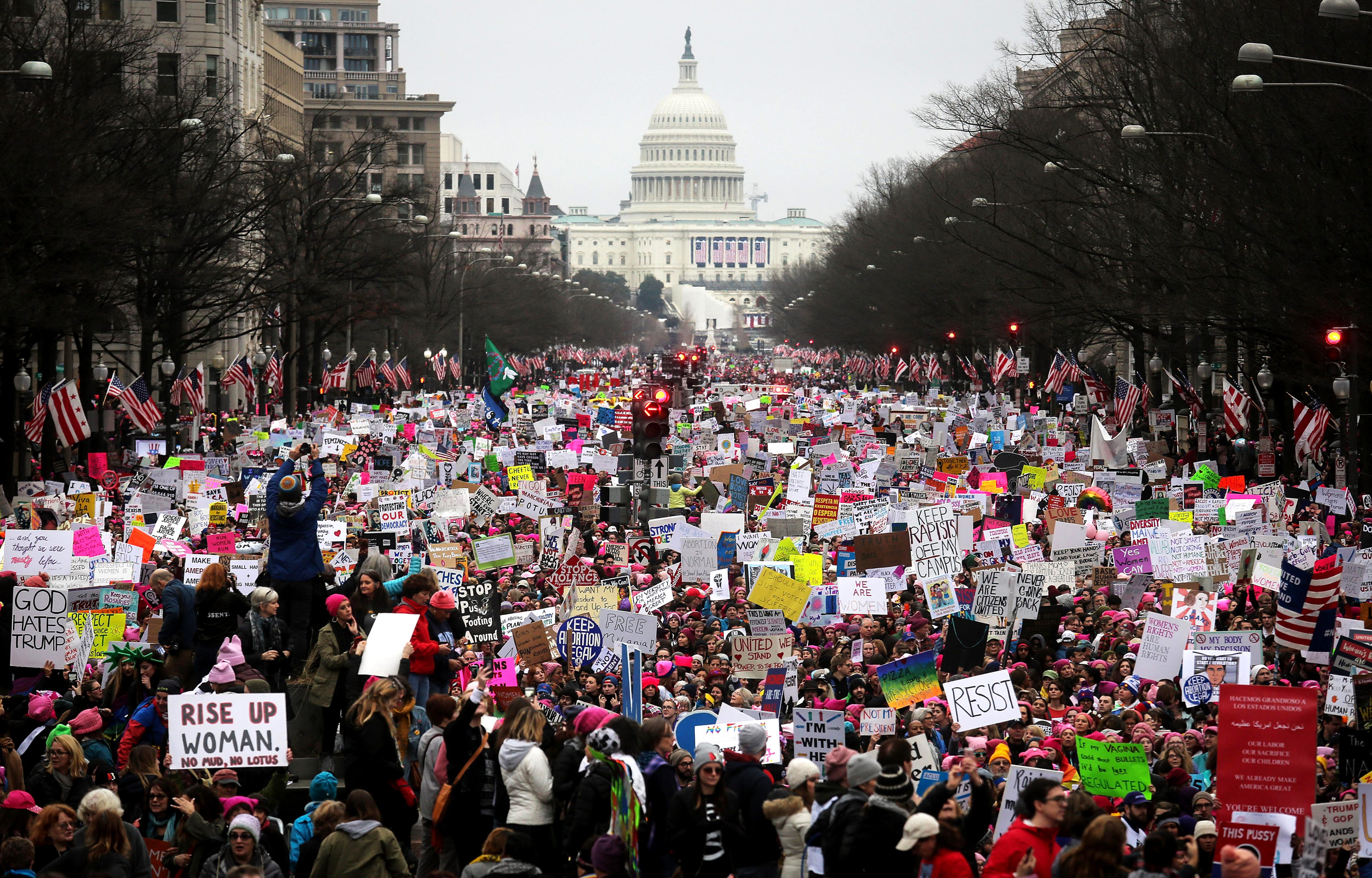Why So Many Web-Fueled Protest Movements Hit a Wall

Protest movements like 2011’s Arab Spring and the recent Women’s March in Washington show how social networks and cell phones can help channel outrage into action. But in a new book, Zeynep Tufekci relates how spending time with digitally enabled protestors revealed that the Internet’s power can also make movements more fragile.
An associate professor at the University of North Carolina at Chapel Hill, she also told MIT Technology Review that governments are getting better at using the Internet to defend the status quo. Tufekci’s book, Twitter and Teargas: The Power and Fragility of Networked Protest, will be published on May 16.
Below is an edited excerpt of her interview. Premium MIT Technology Review subscribers can listen to the full interview.
How has the Internet changed the protest?
Social media empowers social movements in many ways. The number of movements around the world has tripled, maybe quadrupled, in just 10 or 15 years. In the past few years we've had Occupy, Black Lives Matter, Turkey's Gezi Park protests, and the Arab uprisings that swept the Middle East and North Africa—but they haven't had the effects you'd expect given the levels of participation and energy these protests were able to garner.
When you looked at the March on Washington in 1963, you were seeing the Civil Rights movement's organizational strength, the effort and discipline it took to be out in those numbers. The recent Women's March in Washington, D.C., was also very large, but it was the first step of a potential movement, not the culmination of a decade of work. Without a Twitter hashtag or Excel spreadsheets to do your logistics, you really had to build a lot of [organizational] muscle. If you want to be a credible threat to the powers that be, you need to build those muscles.
Has this limited protest movements?
Something you see a lot is tactical freeze. They just get stuck in the first thing that worked and can't take the second step because they have no infrastructure for collective decision-making.
The Occupy movement got stuck once they were expelled from Zuccotti Park, because they had no feasible, functional way to make decisions. I don't want to downplay the repression the Arab Spring movement faced in Egypt — maybe they never had a chance — but they also couldn't figure out productive tactical ways to do different things. There was an election; they couldn’t agree whether to run or boycott; they kept trying to go back to the square—they were frozen in place in tactical terms. Technology lets you get very big without leadership, [but] it doesn’t give you all the power that you hope it gives you.
How are governments pushing back against networked protests? Are they expanding censorship?
We think of censorship as denying information to people, but that’s a very limited, 20th century way of looking at it. I think of censorship as denial of attention through multiple means. Blocking information is incredibly hard these days. Even in countries with a lot of censorship, people can usually find a way to circumvent that. We don’t have tools to deal with misinformation: questioning the credibility of information or using distraction. The Chinese government, for example, is really good at understanding how you can confuse or distract people with other information on social media and hopefully paralyze them so that they don't know what's true or false and just give up.
Protest organizing is just one way that social media has come to host a lot more than just socializing. How are companies like Facebook and Twitter adjusting to their central role in today’s activism, terrorism, and crime?
I do have sympathy for how difficult some of these questions are; we’re all in over our heads. But I would like them to try much, much harder. They’re printing money and spending it all on engineers—they should hire tons of people to study the actual product and its secondary effects.
Facebook announced it is hiring 3,000 people to check videos on its platform; that's a tiny number given their user base of almost two billion. They’re not taking their responsibility seriously enough as one of the biggest companies in the world—this is the brakes and seat belts you need in your product, not an afterthought.
Keep Reading
Most Popular
Large language models can do jaw-dropping things. But nobody knows exactly why.
And that's a problem. Figuring it out is one of the biggest scientific puzzles of our time and a crucial step towards controlling more powerful future models.
The problem with plug-in hybrids? Their drivers.
Plug-in hybrids are often sold as a transition to EVs, but new data from Europe shows we’re still underestimating the emissions they produce.
Google DeepMind’s new generative model makes Super Mario–like games from scratch
Genie learns how to control games by watching hours and hours of video. It could help train next-gen robots too.
How scientists traced a mysterious covid case back to six toilets
When wastewater surveillance turns into a hunt for a single infected individual, the ethics get tricky.
Stay connected
Get the latest updates from
MIT Technology Review
Discover special offers, top stories, upcoming events, and more.